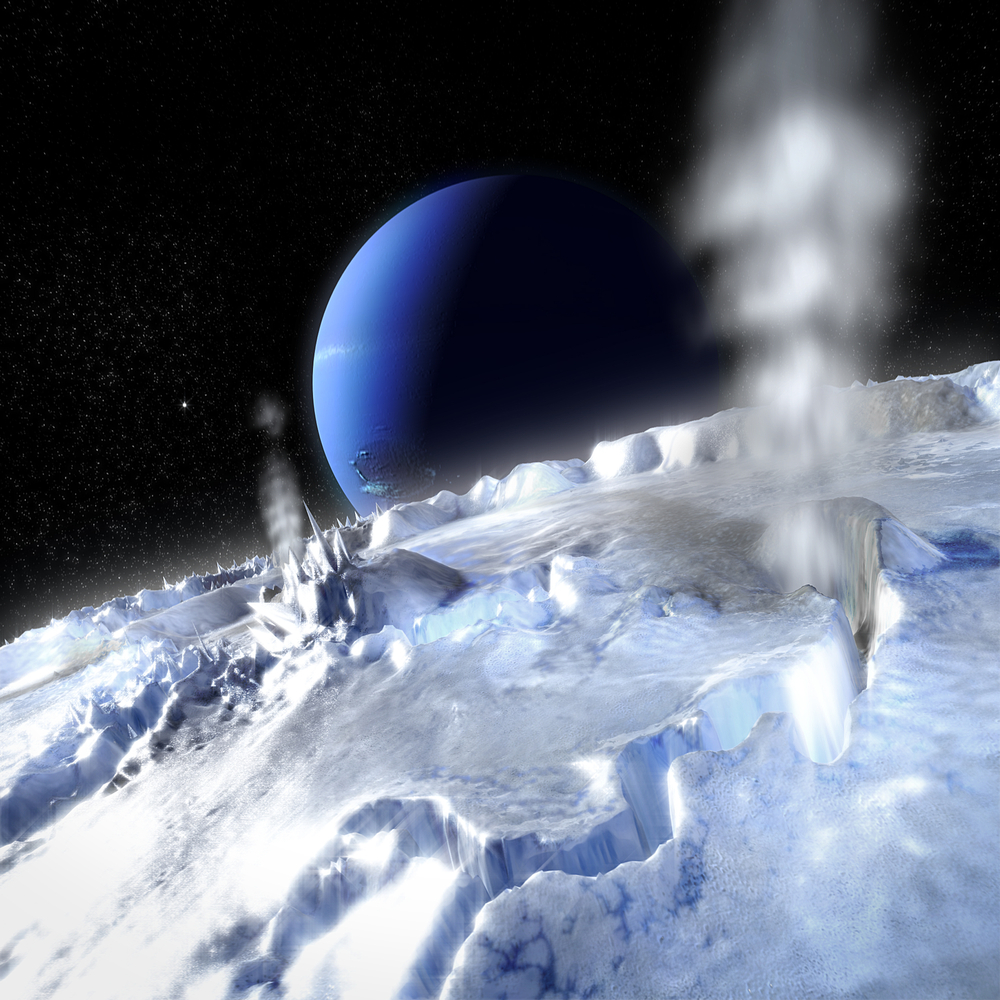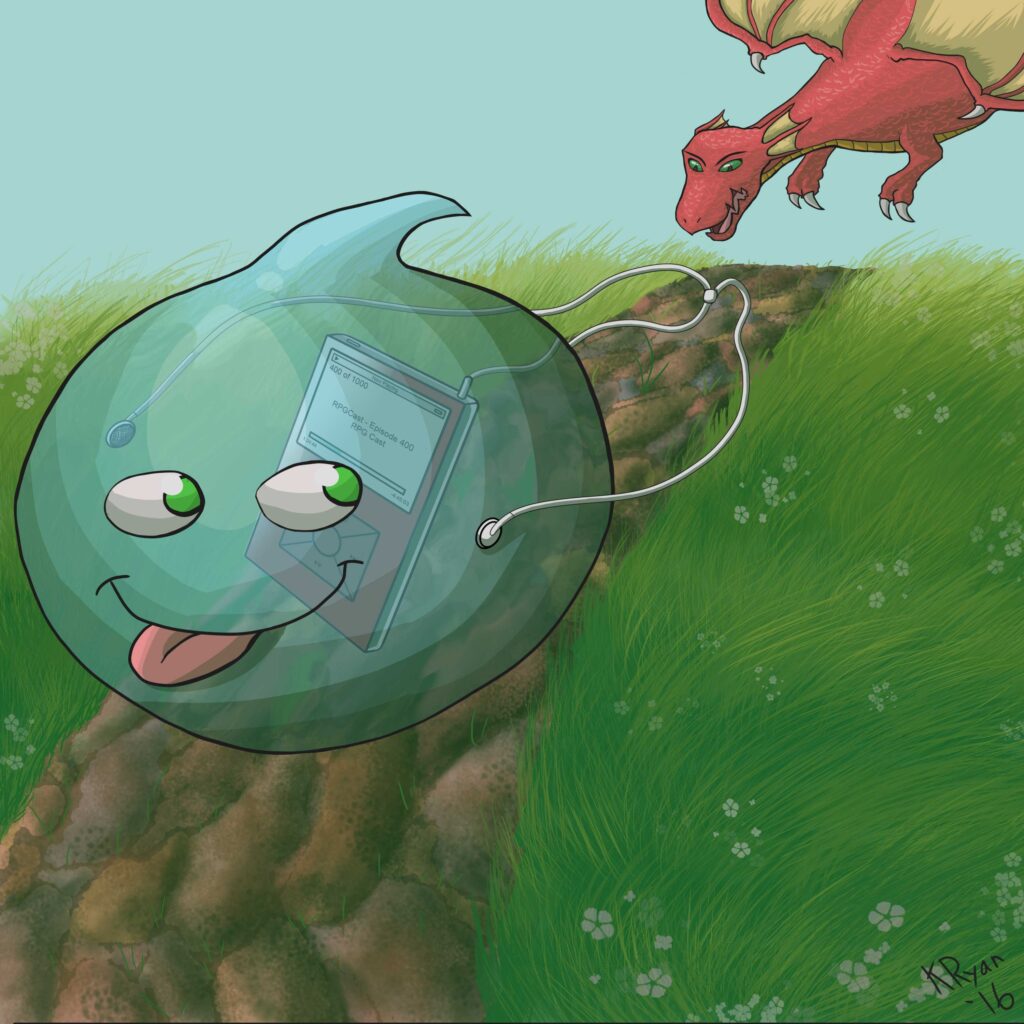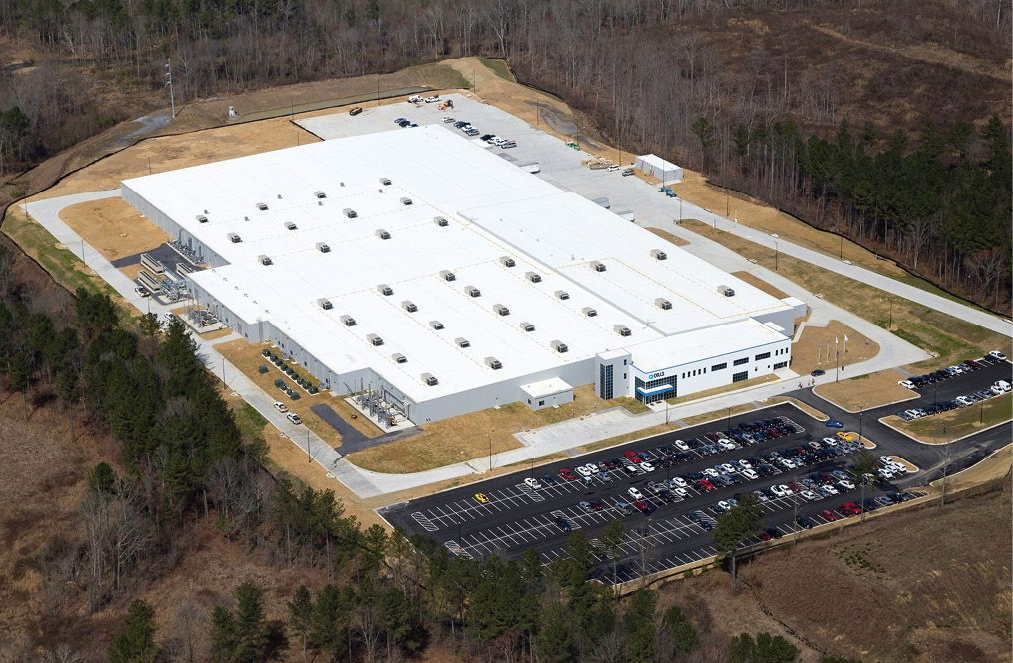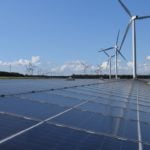While volcanoes ignite all sorts of chaos on Earth, ice volcanoes in space drive geological change in an entirely different way. The landscapes of icy moons across our Solar System are shaped not by molten lava flows, but by water that boils and freezes simultaneously due to extremely low pressure in space.
A new study published in Earth and Planetary Science Letters has recreated the near-zero pressure environment of space to determine how water flows impact the surface of icy moons. Experiments conducted in a low-pressure chamber revealed that, on these moons, vapor bubbles rise in water and fracture the top layer of ice, creating a surface with a variety of geologic features.
Watery Eruptions on Icy Moons
Ice volcanoes, known more formally as cryovolcanoes, have been observed on several moons in the outer Solar System, like Europa (a moon of Jupiter), Enceladus (a moon of Saturn), and Triton (a moon of Neptune).
These moons are enveloped in an outer surface made of ice, yet many also have vast subsurface oceans hidden beneath their crust. On some of the moons, jets of water vapor and water particles have been observed erupting into space in a process called “explosive cryovolcanism.”
Scientists don’t know the exact mechanisms that trigger the eruptions , but the new study has shed light on one way that subsurface water is able to pass through the moons’ icy crust, another process called “effusive cryovolcanism.” This process occurs when liquid water wells up to the surface, similar to how lava flows out of fissures on Earth.
Read More: Space Volcanoes Tell the Explosive History of Mars, Venus, and Multiple Moons
Bubbling to the Surface
To understand how effusive cryovolcanism would play out on a moon like Europa or Enceladus, researchers involved with the new study turned to a low-pressure chamber located at the Open University in the U.K. They filled the Large Dirty Mars Chamber (or “George,” as it is nicknamed) with large volumes of water to run their experiments.
When the pressure was lowered, the water began to boil and bubble despite remaining cold. This is because when pressure decreases, the boiling point of water does as well. When the water reached its freezing point, floating pieces of ice formed and grew until a thin sheet covered most of the water.
But even after the ice sheet formed, the liquid water continued to boil. As the bubbles rose in the water, they got trapped beneath the ice, causing pressure to build up and create cracks in the ice through which water could escape.
“We found that the freezing process of water under very low pressure is much more complex than previously thought,” said lead author Petr Broz, a researcher at the Czech Academy of Sciences, in a statement . “In such conditions, water rapidly boils even at low temperatures, as it is not stable under low pressure. Simultaneously, it evaporates and begins to freeze, driven by the intense cooling effect caused by the evaporation itself. The ice crust that forms is repeatedly disrupted by vapour bubbles, which lift and fracture the ice, significantly slowing down, complicating, and prolonging the freezing process.”
Exploring Cryovolcanoes in the Solar System
The experiments mimicking the near-vacuum-like conditions of Europa and Enceladus showed how those moons are transformed by water flows, which shape the uneven icy crust with bumps and depressions.
The researchers say that these geologic features could end up being a key target for future missions to analyze, and that they may occur not only on icy moons but also on other planetary bodies in the Solar System.
“These topographic irregularities — caused by trapped vapour beneath the ice — may leave distinct signatures that could be detectable by orbiting spacecraft, for example by those equipped with radars, offering a potential new way to identify ancient cryovolcanic activity,” said author Manish Patel, a planetary scientist at the Open University. “This could provide valuable clues for planning future missions to these remote worlds — and help us better understand the still mysterious process of cryovolcanism.”
Read More : With Icy Volcanoes, the Moon Europa Is Obscure, Along With These 3 Other Moons
Article Sources
Our writers at Discovermagazine.com use peer-reviewed studies and high-quality sources for our articles, and our editors review for scientific accuracy and editorial standards. Review the sources used below for this article:
Earth and Planetary Science Letters. The complexity of water freezing under reduced atmospheric pressure
Nature Communications. Identifying signatures of past and present cryovolcanism on Europa
Jack Knudson is an assistant editor at Discover with a strong interest in environmental science and history. Before joining Discover in 2023, he studied journalism at the Scripps College of Communication at Ohio University and previously interned at Recycling Today magazine
https://www.discovermagazine.com/the-sciences/ice-volcanoes-across-the-solar-system-distort-surfaces-with-boiling-and





